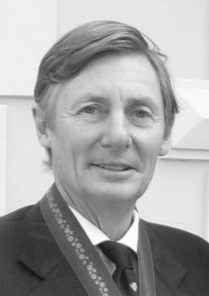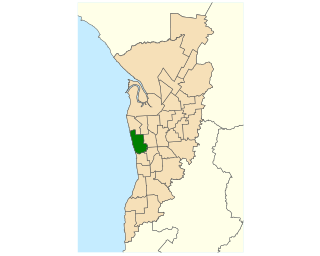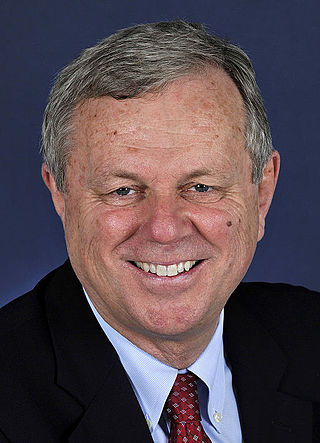Related Research Articles

John Charles Bannon was an Australian politician and academic. He was the 39th Premier of South Australia, leading the South Australian Branch of the Australian Labor Party from a single term in opposition back to government at the 1982 election.
The Division of Adelaide is an Australian electoral division in South Australia and is named for the city of Adelaide, South Australia's capital.
The Division of Hindmarsh is an Australian Electoral Division in South Australia covering the north western and western coastal suburbs of Adelaide. The division was one of the seven established when the former Division of South Australia was split on 2 October 1903, and was first contested at the 1903 election, though now on slightly different boundaries. The Division is named after Sir John Hindmarsh, who was Governor of South Australia from 1836 to 1838. Since the 2019 Australian federal election The Division of Hindmarsh consists of part of the City of Charles Sturt, part of the City of Port Adelaide Enfield, and part of the City of West Torrens.
The Division of Mayo is an Australian electoral division located to the east and south of Adelaide, South Australia. Created in the state redistribution of 3 September 1984, the division is named after Helen Mayo, a social activist and the first woman elected to an Australian University Council. The 9,315 km2 rural seat covers an area from the Barossa Valley in the north to Cape Jervis in the south. Taking in the Adelaide Hills, Fleurieu Peninsula and Kangaroo Island regions, its largest population centre is Mount Barker. Its other population centres are Aldgate, Bridgewater, Littlehampton, McLaren Vale, Nairne, Stirling, Strathalbyn and Victor Harbor, and its smaller localities include American River, Ashbourne, Balhannah, Brukunga, Carrickalinga, Charleston, Cherry Gardens, Clarendon, Crafers, Cudlee Creek, Currency Creek, Delamere, Echunga, Forreston, Goolwa, Gumeracha, Hahndorf, Houghton, Inglewood, Kersbrook, Kingscote, Langhorne Creek, Lobethal, Macclesfield, McLaren Flat, Meadows, Middleton, Milang, Mount Compass, Mount Pleasant, Mount Torrens, Mylor, Myponga, Normanville, Norton Summit, Oakbank, Penneshaw, Piccadilly, Port Elliot, Second Valley, Springton, Summertown, Uraidla, Willunga, Woodchester, Woodside, Yankalilla, and parts of Birdwood, Old Noarlunga and Upper Sturt.

Australian Greens SA is a green political party located in the Australian state of South Australia. It is a member of the federation of the Australian Greens party.

The Division of Port Adelaide was an Australian electoral division in the state of South Australia. The 181 km2 seat extended from St Kilda in the north to Grange Road and Findon in the south with part of Salisbury to the east. Suburbs included Alberton, Beverley, Birkenhead, Cheltenham, Findon, Kilkenny, Largs Bay, Mansfield Park, North Haven, Ottoway, Parafield Gardens, Paralowie, Pennington, Port Adelaide, Queenstown, Rosewater, Salisbury Downs, Semaphore, Woodville, West Croydon, and part of Seaton. The seat also included Torrens Island and Garden Island. Port Adelaide was abolished in 2019, after a redistribution triggered by a change in representation entitlement which saw South Australia's seats in the House of Representatives reduced to ten.
The term swing refers to the extent of change in voter support, typically from one election or opinion poll to another, expressed as a positive or negative percentage point. For the Australian House of Representatives and the lower or unicameral houses of the parliaments of all the states and territories except Tasmania and the ACT, as well as Tasmania's upper house, Australia employs preferential voting in single-member constituencies. Under the full-preference instant-runoff voting system, in each seat the candidate with the lowest vote is eliminated and their preferences are distributed, which is repeated until only two candidates remain. While every seat has a two-candidate preferred (TCP) result, seats where the major parties have come first and second are commonly referred to as having a two-party-preferred (TPP) result. The concept of "swing" in Australian elections is not simply a function of the difference between the votes of the two leading candidates, as it is in Britain. To know the majority of any seat, and therefore the swing necessary for it to change hands, it is necessary to know the preferences of all the voters, regardless of their first preference votes. It is not uncommon in Australia for candidates who have comfortable leads on the first count to fail to win the seat, because "preference flows" go against them.

Colton is a single-member electoral district for the South Australian House of Assembly. It is a 26.2 km2 suburban electorate on Adelaide's western beaches, taking in the suburbs of Adelaide Airport, Fulham, Fulham Gardens, Glenelg North, Henley Beach, Henley Beach South, Kidman Park, West Beach and part of Lockleys.

Lee is a single-member electoral district for the South Australian House of Assembly. Named after the women's suffrage campaigner Mary Lee, it is an 18.9 km2 suburban electorate on Adelaide's north-western beaches, taking in the suburbs of Grange, Royal Park, Seaton, Semaphore Park, Tennyson, West Lakes, and West Lakes Shore.

Unley is a single-member electoral district for the South Australian House of Assembly. Named after the suburb of the same name, it is the state's smallest electorate by area at just 14.1 km2 (5.4 sq mi). It is a suburban electorate in Adelaide's inner south, taking in the suburbs of Eastwood, Frewville, Fullarton, Glenside, Glenunga, Goodwood, Highgate, Hyde Park, Kings Park, Malvern, Myrtle Bank, Parkside, Unley, Unley Park and Wayville, as well as parts of Glen Osmond and Millswood.
State elections were held in South Australia on 11 December 1993. All 47 seats in the South Australian House of Assembly were up for election. The incumbent Labor government, led by Premier Lynn Arnold, was defeated by the Liberal Opposition, led by Dean Brown, in a landslide victory. The Liberals won what is still the largest majority government in South Australian history.
The Playmander was a pro-rural electoral malapportionment in the Australian state of South Australia, which was introduced by the incumbent Liberal and Country League (LCL) government in 1936, and remained in place for 32 years until 1968.

In Australian politics, the two-party-preferred vote, commonly referred to as simply preferences, is the result of an election or opinion poll after preferences have been distributed to the two candidates with the highest number of votes who, in some cases, can be independents. For the purposes of TPP, the Liberal/National Coalition is usually considered a single party, with Labor being the other major party. Typically the TPP is expressed as the percentages of votes attracted by each of the two major parties, e.g. "Coalition 50%, Labor 50%", where the values include both primary votes and preferences. The TPP is an indicator of how much swing has been attained/is required to change the result, taking into consideration preferences, which may have a significant effect on the result.

State elections were held in South Australia on 30 May 1970. All 47 seats in the South Australian House of Assembly were up for election. The incumbent Liberal and Country League led by Premier of South Australia Steele Hall was defeated by the Australian Labor Party led by Leader of the Opposition Don Dunstan.

The 2010 South Australian state election elected members to the 52nd Parliament of South Australia on 20 March 2010. All seats in the House of Assembly or lower house, whose current members were elected at the 2006 election, and half the seats in the Legislative Council or upper house, last filled at the 2002 election, became vacant.

State elections were held in South Australia on 29 April 1944. All 39 seats in the South Australian House of Assembly were up for election. The incumbent Liberal and Country League government led by Premier of South Australia Thomas Playford IV defeated the opposition Australian Labor Party led by Leader of the Opposition Robert Richards.

The 2018 South Australian state election to elect members to the 54th Parliament of South Australia was held on 17 March 2018. All 47 seats in the House of Assembly or lower house, whose members were elected at the 2014 election, and 11 of 22 seats in the Legislative Council or upper house, last filled at the 2010 election, were contested. The record-16-year-incumbent Australian Labor Party (SA) government led by Premier Jay Weatherill was seeking a fifth four-year term, but was defeated by the opposition Liberal Party of Australia (SA), led by Opposition Leader Steven Marshall. Nick Xenophon's new SA Best party unsuccessfully sought to obtain the balance of power.
The National Party was a political party active in South Australia from 1917 to 1923. As with the federal National Labor Party, it was created in the wake of the Australian Labor Party split over conscription, resulting in the February 1917 expulsion from the South Australian Labor Party of the Premier, Crawford Vaughan, and his supporters. It was initially known as the National Labor Party like its federal counterpart, but was renamed at a conference in June 1917. The party initially continued in government under Vaughan, but was subsequently defeated in parliament in July 1917, and thereafter served as the junior partner in a coalition with the Liberal Union under Archibald Peake.
The Lang Labor Party was a political party active in South Australia from 1931 to 1934, aligned with Lang Labor and the policies of Premier of New South Wales Jack Lang.

The South Australian Liberal Party, officially known as the Liberal Party of Australia (South Australian Division), and often shortened to SA Liberals, is the South Australian Division of the Liberal Party of Australia. It was formed as the Liberal and Country League (LCL) in 1932 and became the South Australian Division of the Liberal Party when the Liberal Party was formed in 1945. It retained its Liberal and Country League name before changing to its current name in 1974. It is one of two major parties in the bicameral Parliament of South Australia, the other being the Australian Labor Party (SA Branch). The party is led by Vincent Tarzia since 12 August 2024.